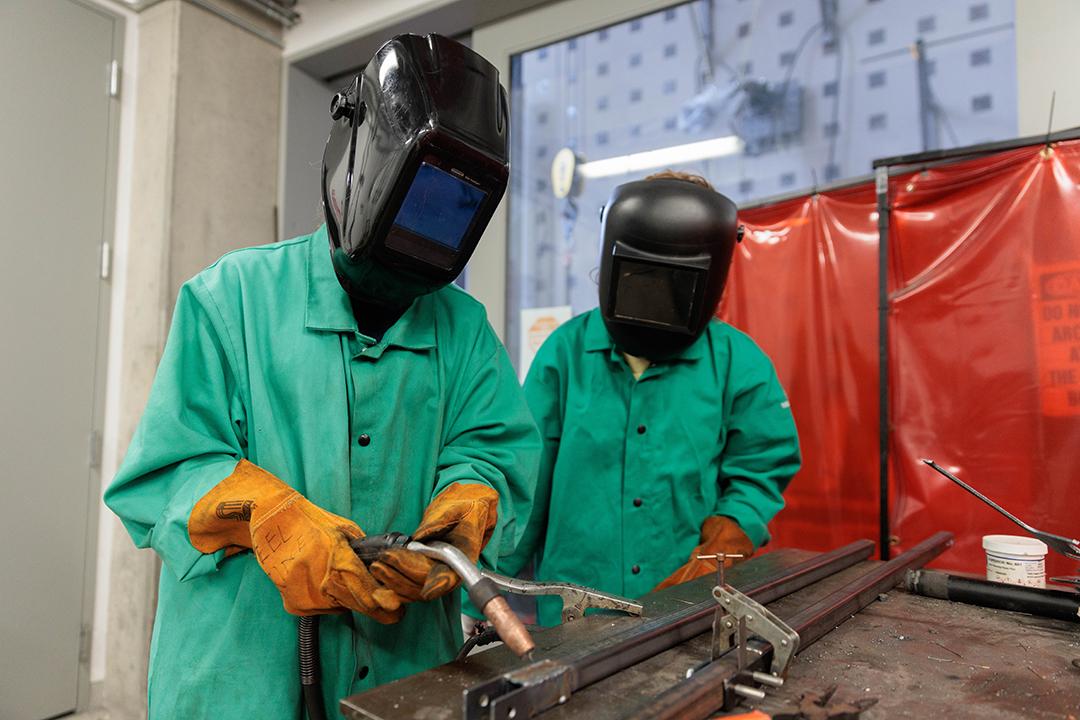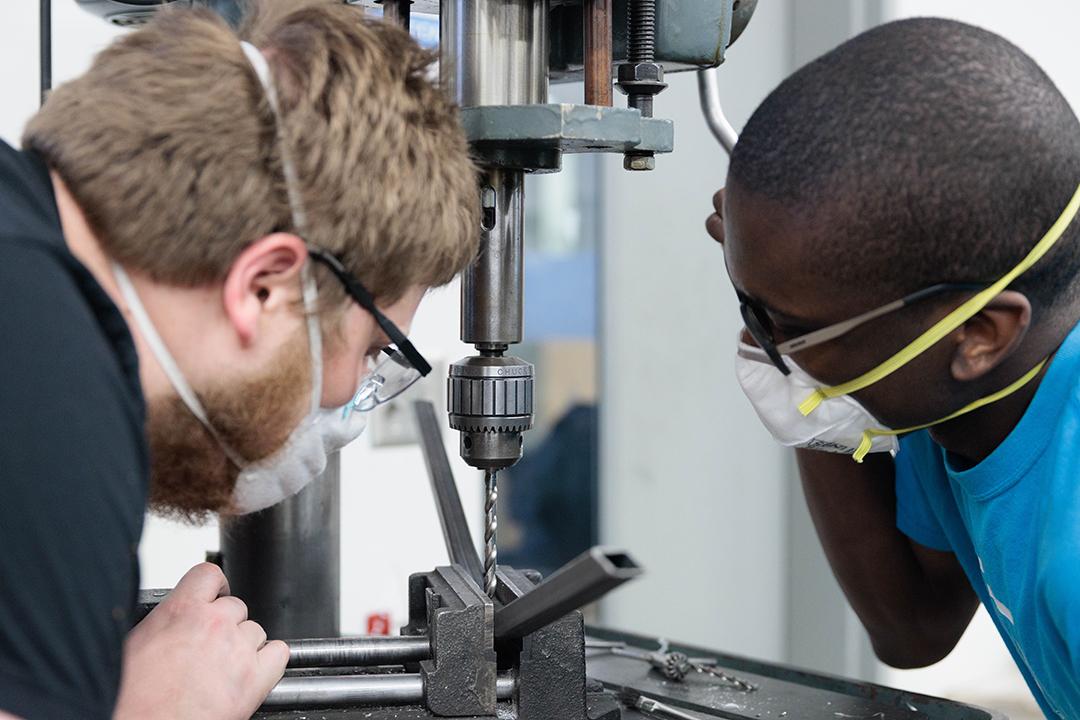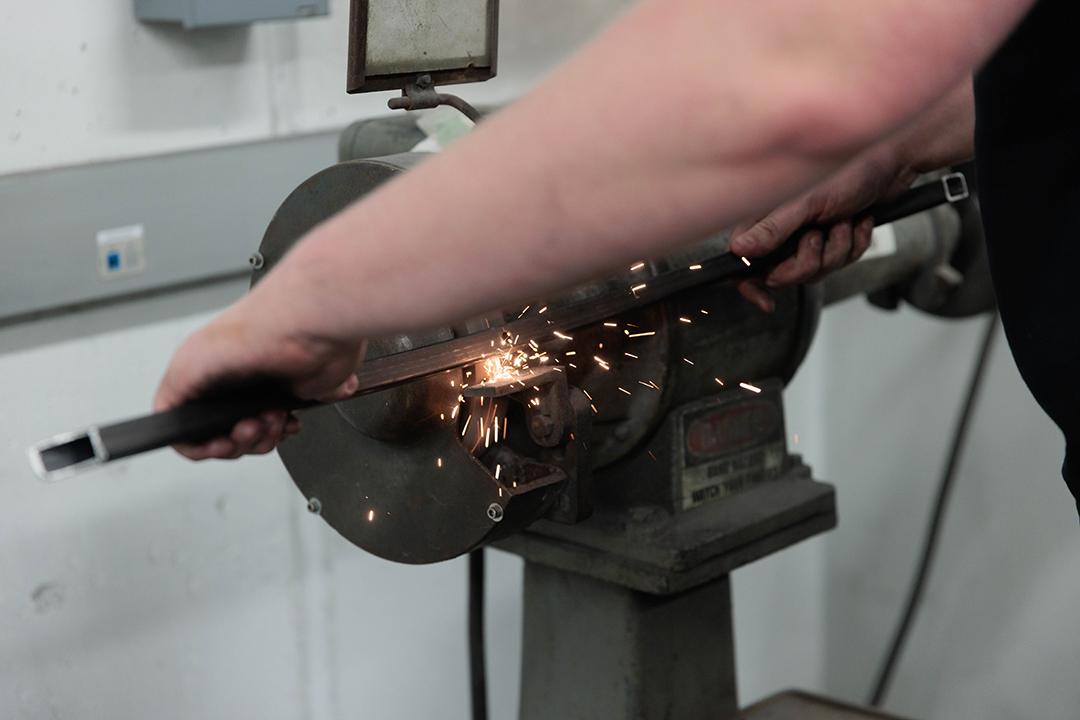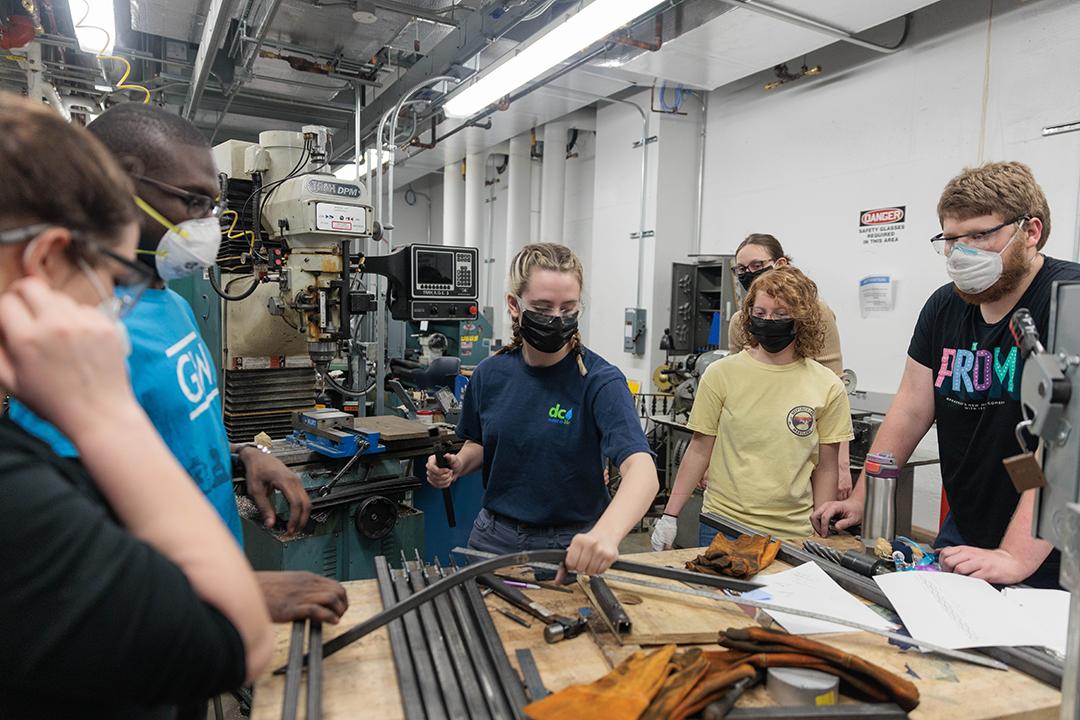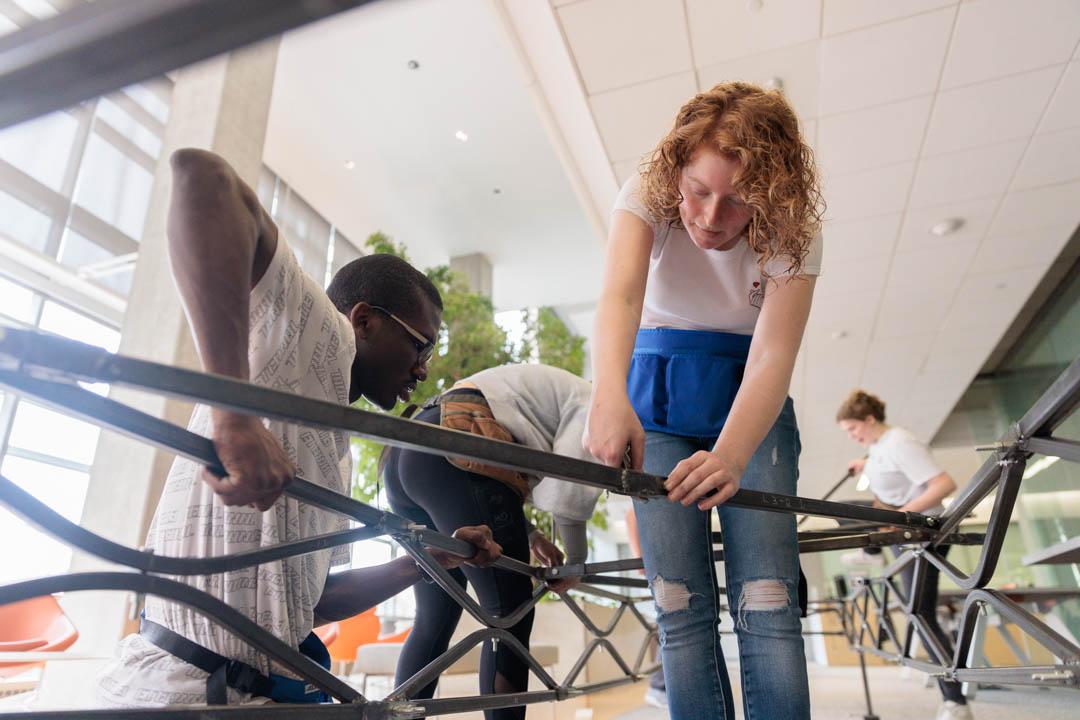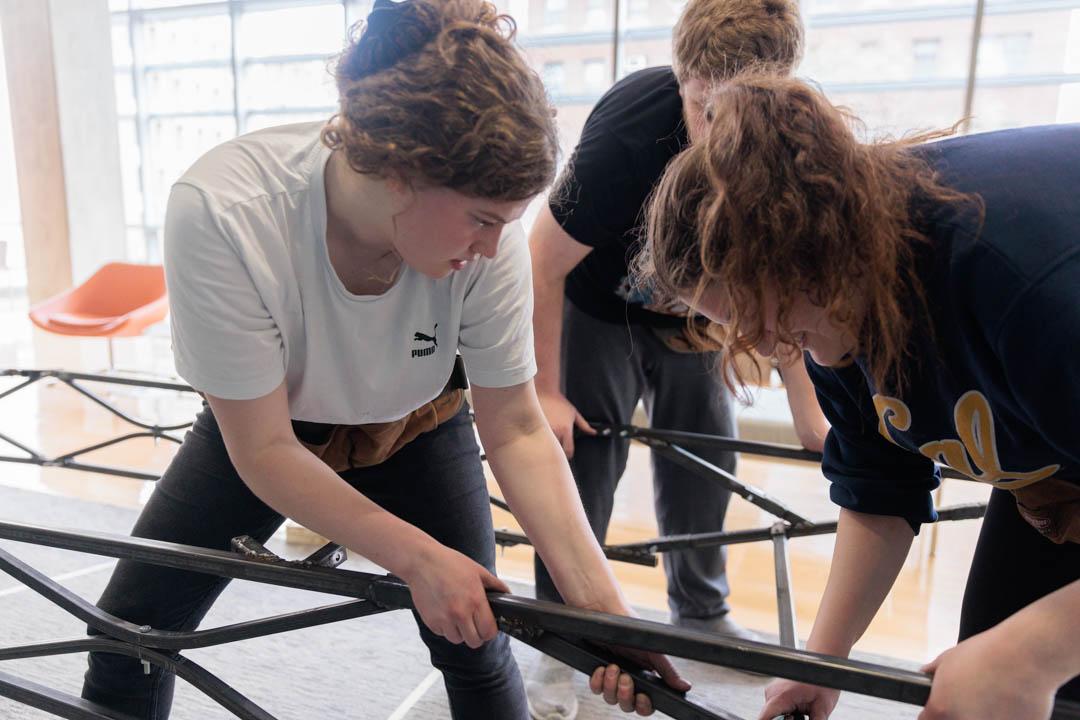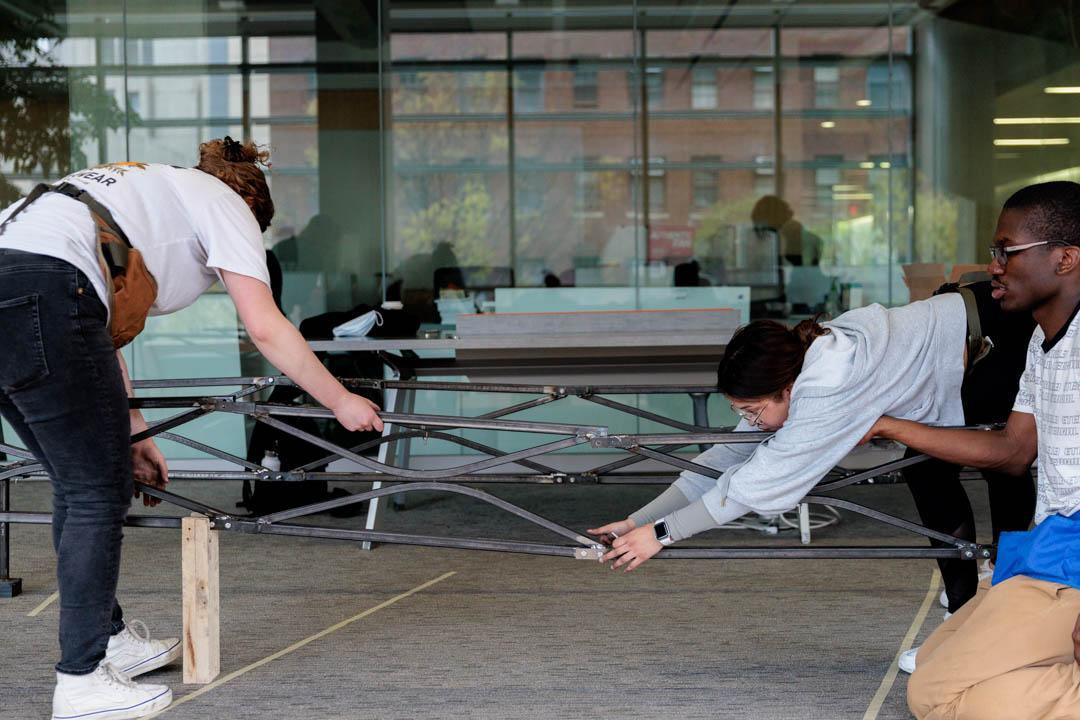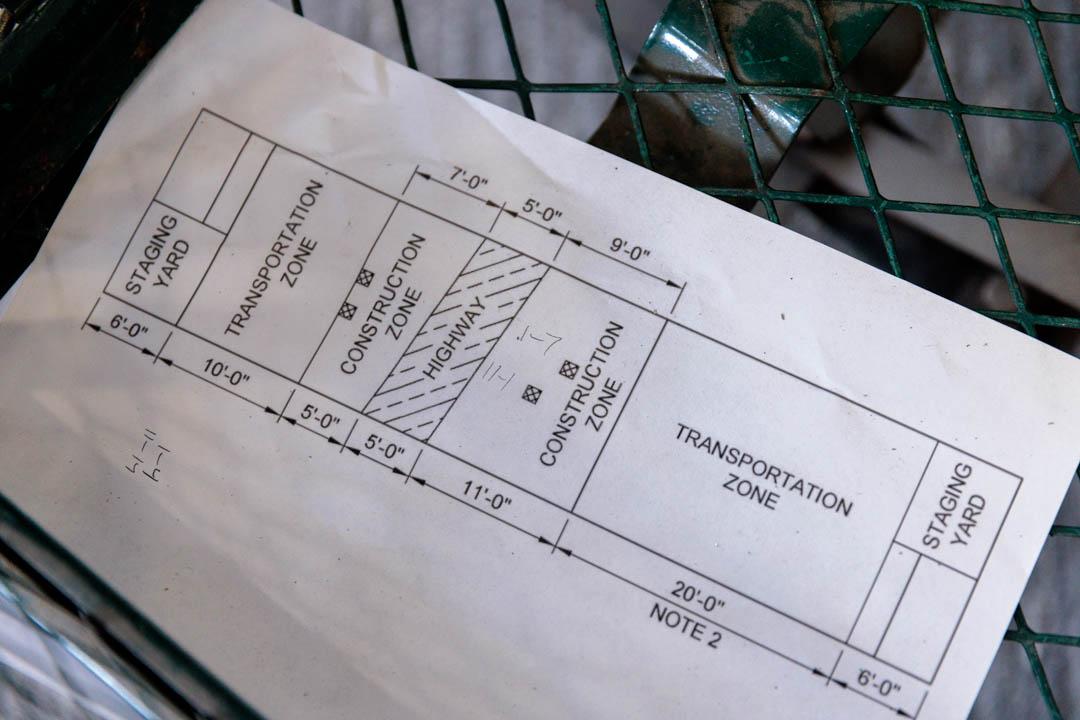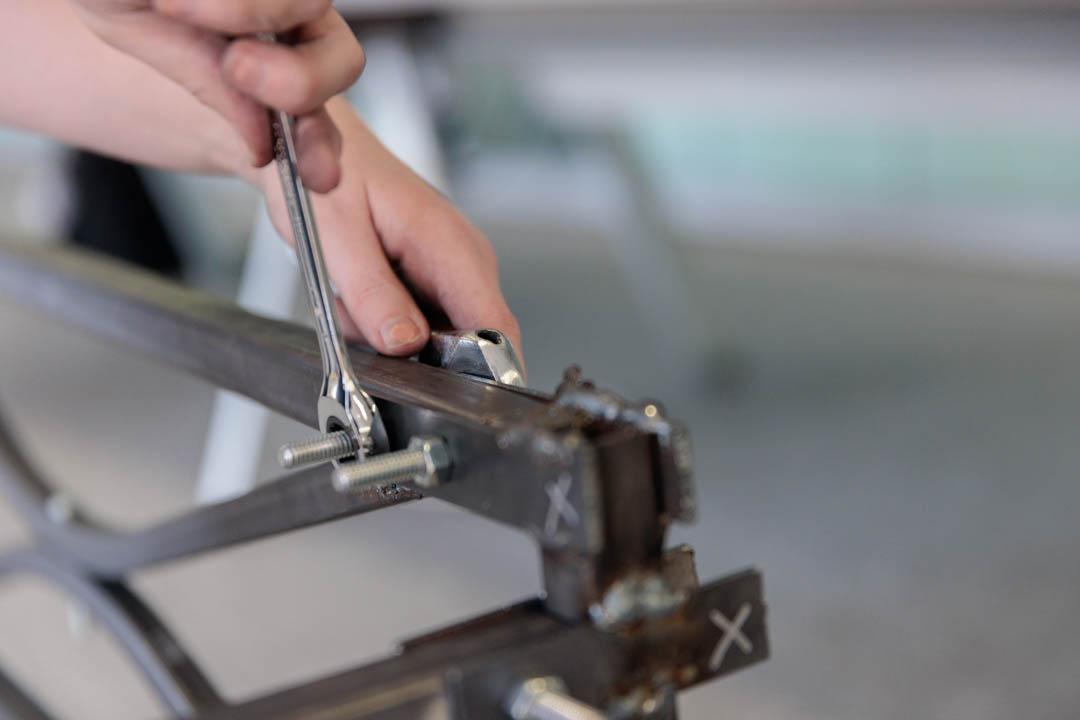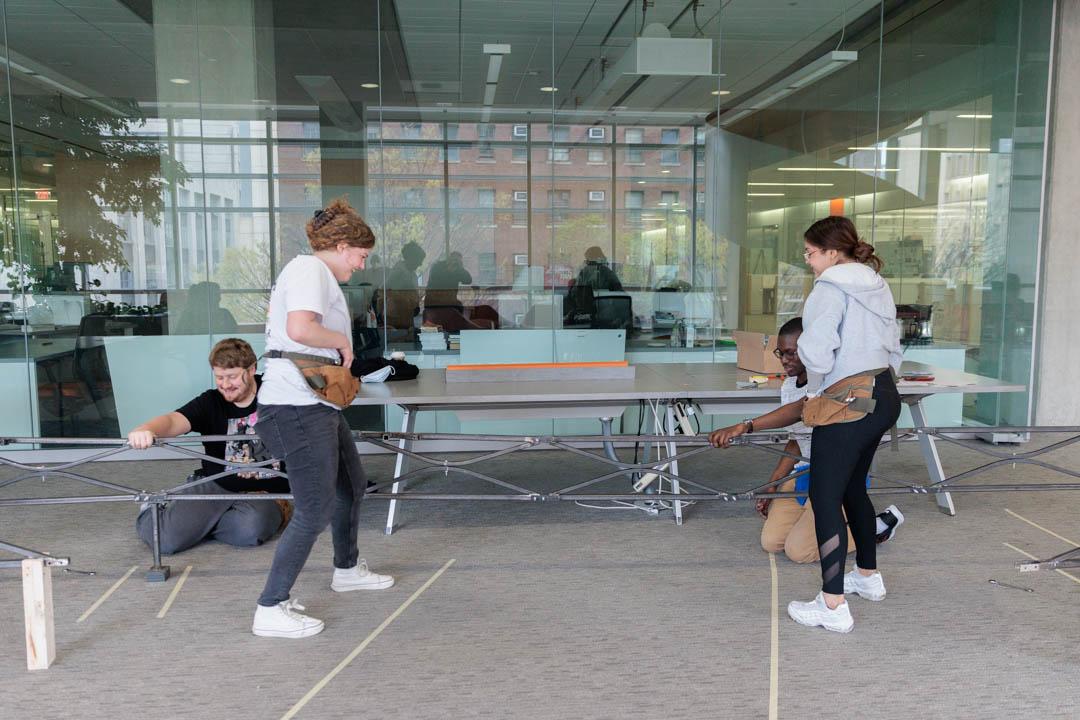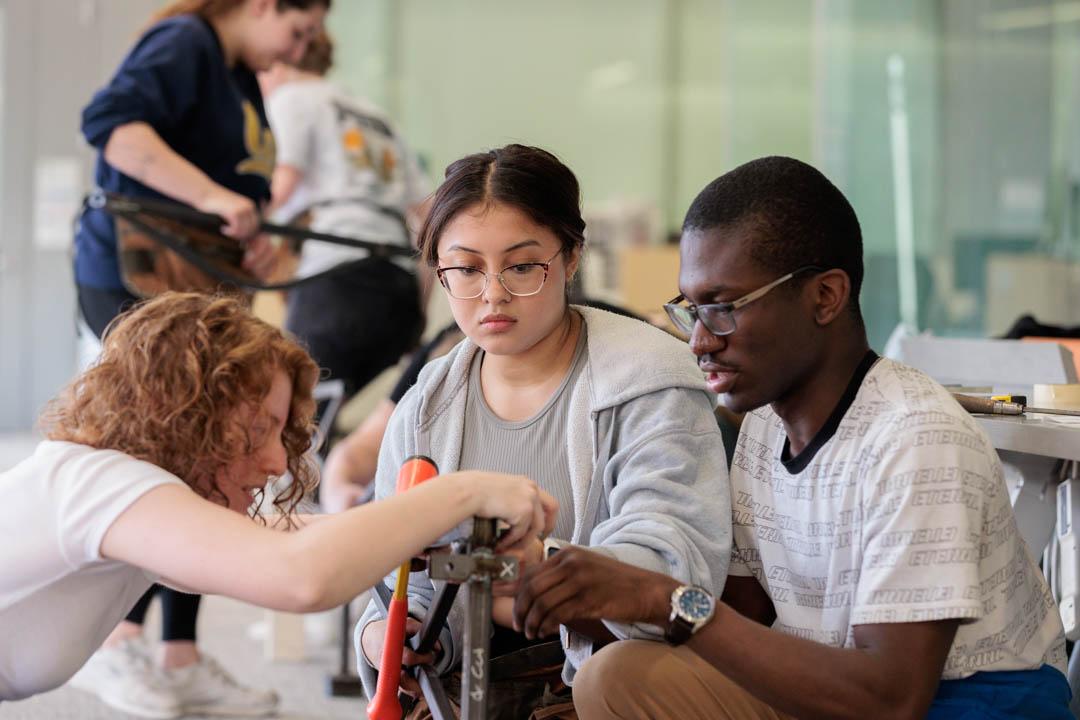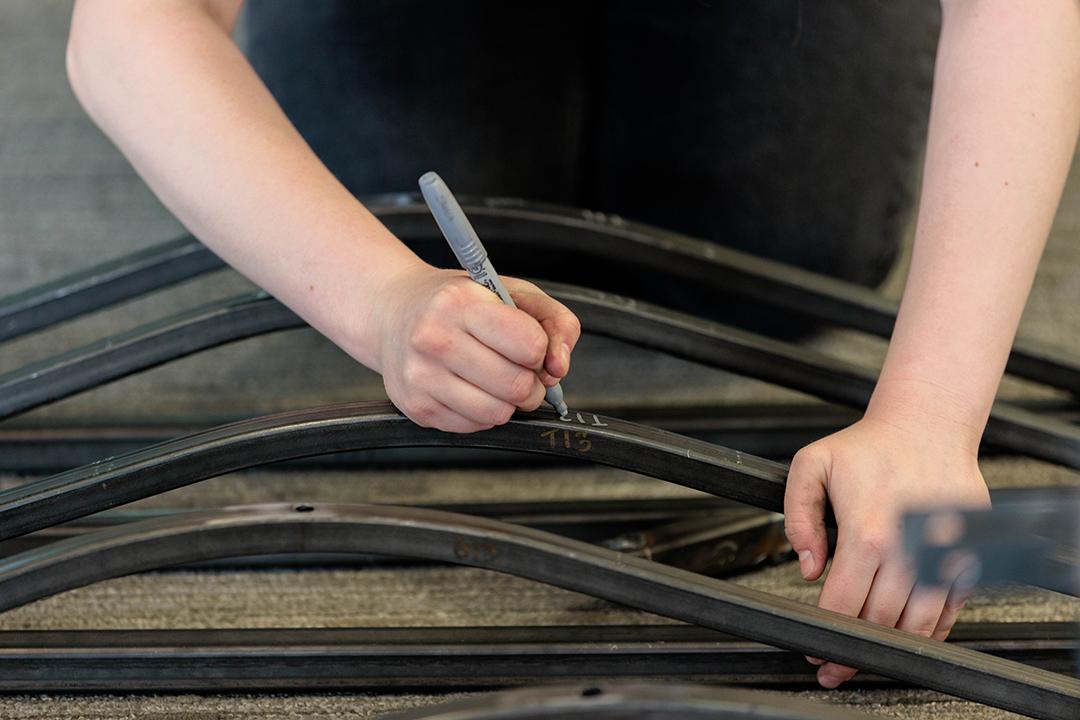By Kristen Mitchell
A team of George Washington University civil engineering students spent the past several months designing and building a 20-foot, scale-model steel bridge—putting the skills they have learned in the classroom to work with one goal in mind.
Could they forge a structure that supports 2,500 pounds in added weight?
The answer is a resounding yes, according to Savana Stewart, a senior in civil engineering and captain of GW’s steel bridge team. Last week, GW students competed at the regional Student Steel Bridge Competition in Pittsburgh where they were challenged to assemble and test their bridge.
It was the first time GW’s steel bridge team had the opportunity to compete in person in two years. The competition was held virtually last year and canceled in 2020 due to the COVID-19 pandemic.
The team successfully assembled their bridge in 28 minutes and received a second-place award for aesthetics. They were not eligible to advance in the competition, however, because the dimensions of their bridge were slightly too wide and some issues with their connections. Eight of the nine teams competing were similarly disqualified.
"That day I was a little disappointed we were disqualified, but looking back, I feel pretty happy with how we did," Stewart said. "We were still eligible to complete the load test, and we were able to hold the full maximum load without failing."
Stewart first got involved with GW’s steel bridge team during the fall of her sophomore year, where she contributed to the structural design. She was drawn to the opportunity to get hands-on engineering experience.
"I always knew that I was interested in the structural side of civil engineering," she said. "I thought it would be a fun opportunity to learn more about that work with some other students in my year who had the same interests."
Each year teams are asked to design a bridge that meets specific criteria, just as they would be expected to do as professionals. This year’s challenge was to design a green wildlife bridge that would provide an unobstructed route for animals to safely navigate around a busy highway. Organizers also provided additional specifications for the bridge’s proportions and design. With a fresh problem to solve and new rule changes, teams must continuously return to the drawing board rather than simply adapt previous designs.
The GW team began developing its design during the fall semester, doing analysis to determine strengths and weaknesses and materials would be needed where. They began constructing components of the bridge during the spring semester, working in the Science and Engineering Hall machine shop. The team practiced assembling the bridge in its entirety in the days leading up to the competition, identifying areas where adjustments were needed.
Kim Roddis, a professor in the Department of Civil and Environmental Engineering, has served as the team’s faculty adviser for more than a decade. Designing, constructing and testing their bridge gives students experience working through all the real-world challenges professional structural engineers must consider in their work.
"You very seldom, as a student, get an opportunity to have a structure that you have designed, you have built as a team, and then you actually get to check its performance," Roddis said. "Even when they make a mistake, they learn so much."
Evalyn Maxwell, a junior majoring in civil engineering, said she was excited to finally be able to compete in person after initially joining the team as a first-year student. Steel bridge has helped her develop connections and friendships with other students in the field and provided a critical opportunity for collaboration.
"Getting to work on a team, that's huge within the industry, especially with civil engineering—you can't do that stuff alone," she said.
Marcus Giff, a senior majoring in civil engineering, joined the team as a first-year student to explore his interest in bridge design. Earlier this month, Giff said he was excited for one last chance to compete before graduating.
"Being back in person is going to enable me to experience all the things I enjoy about Steel Bridge once again," he said.



